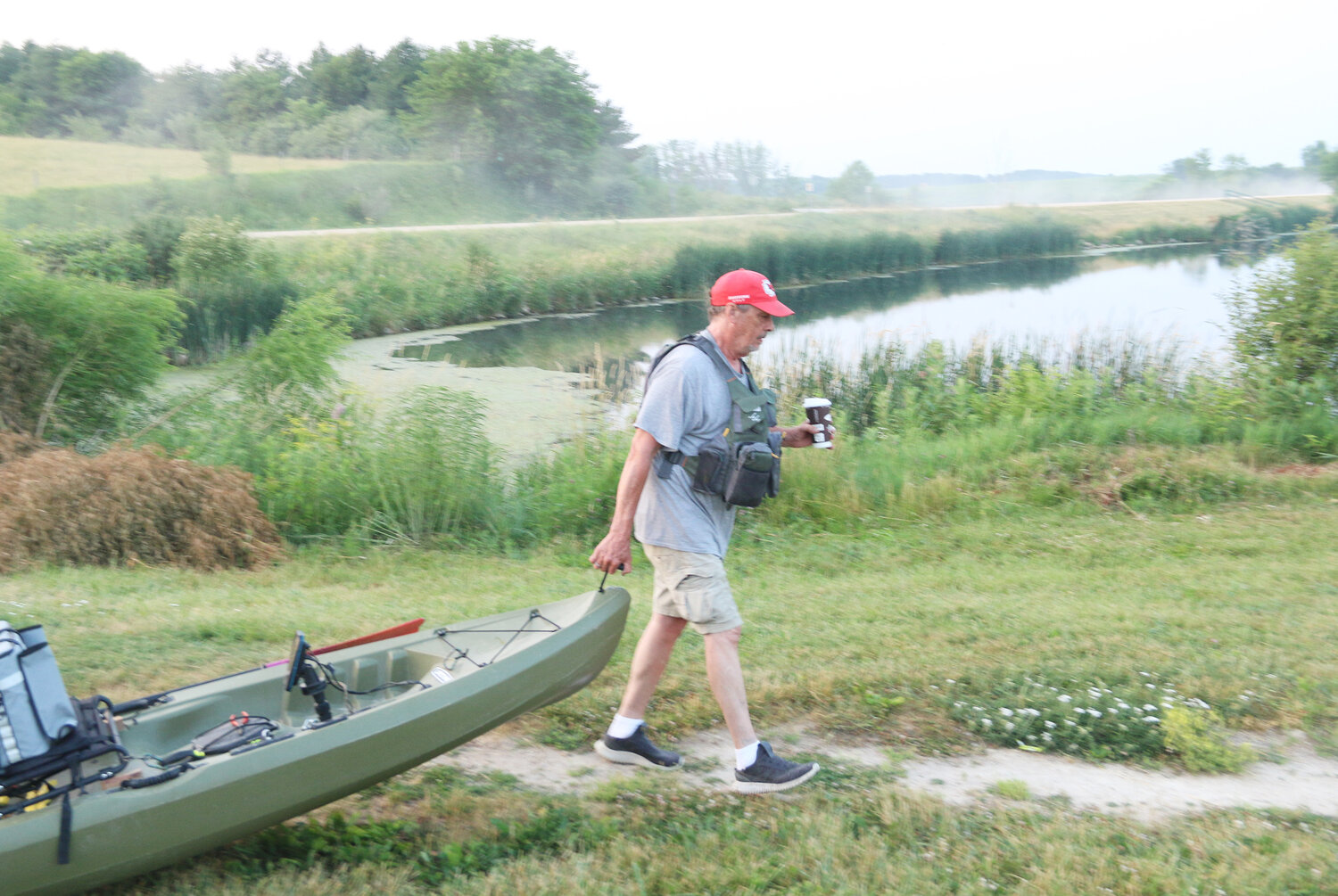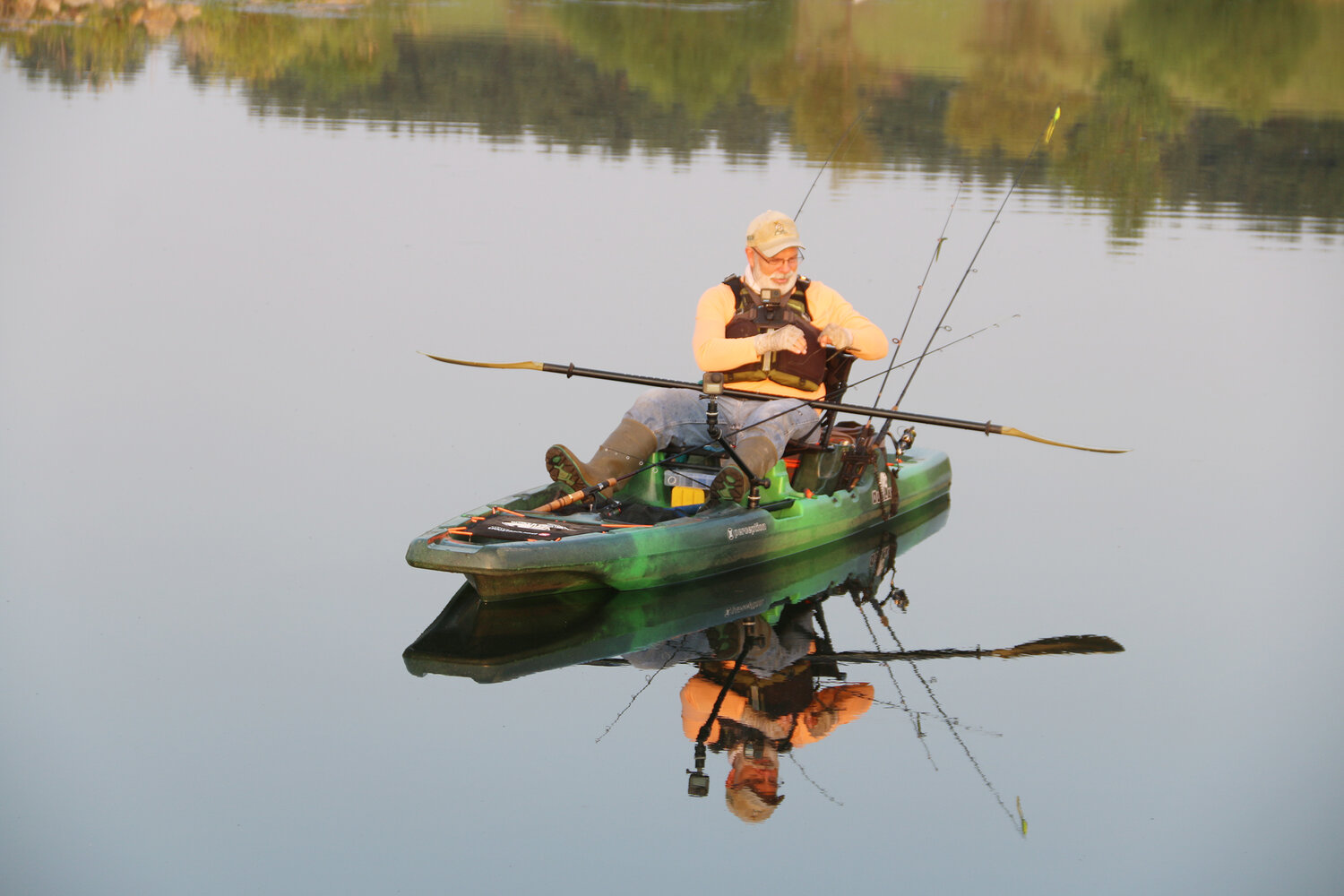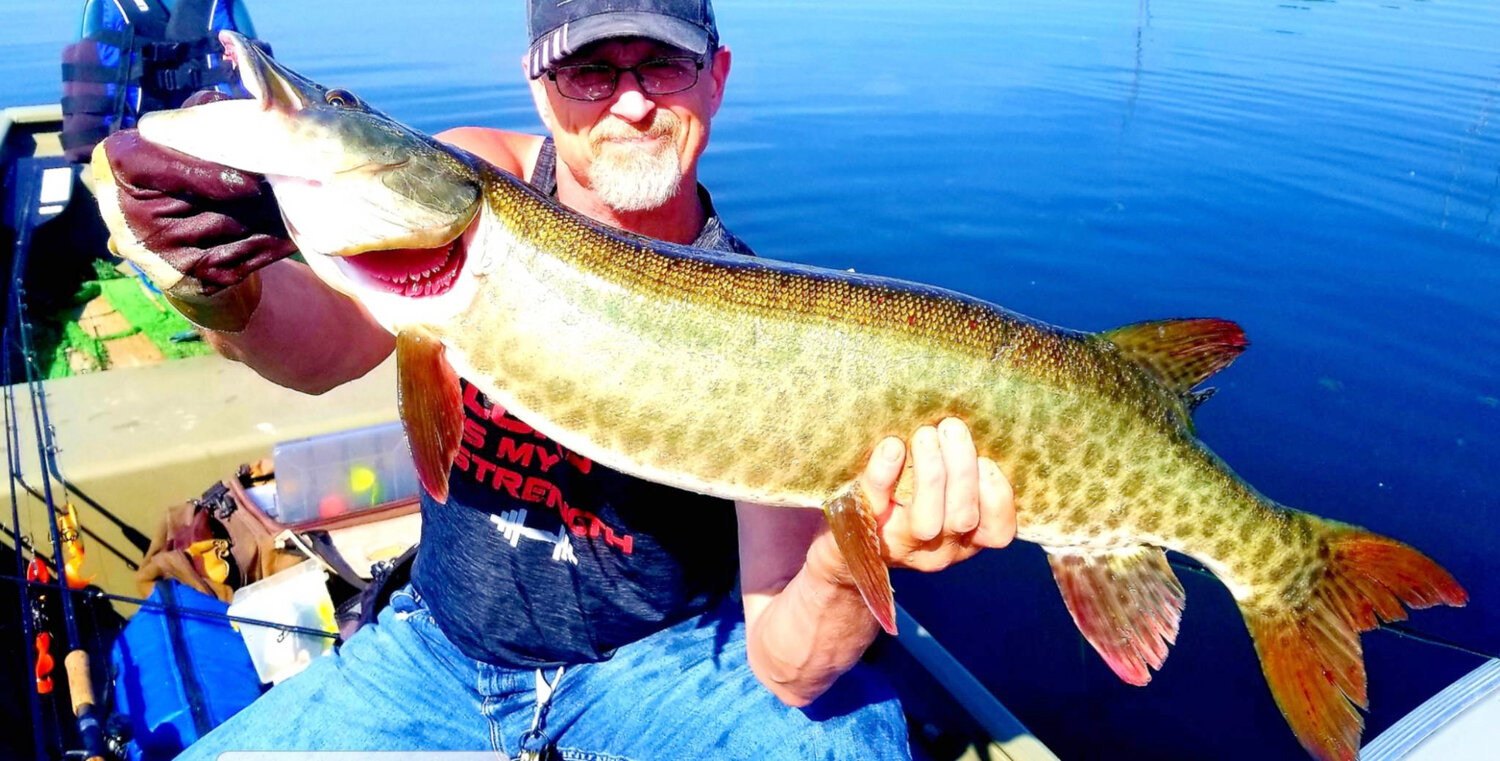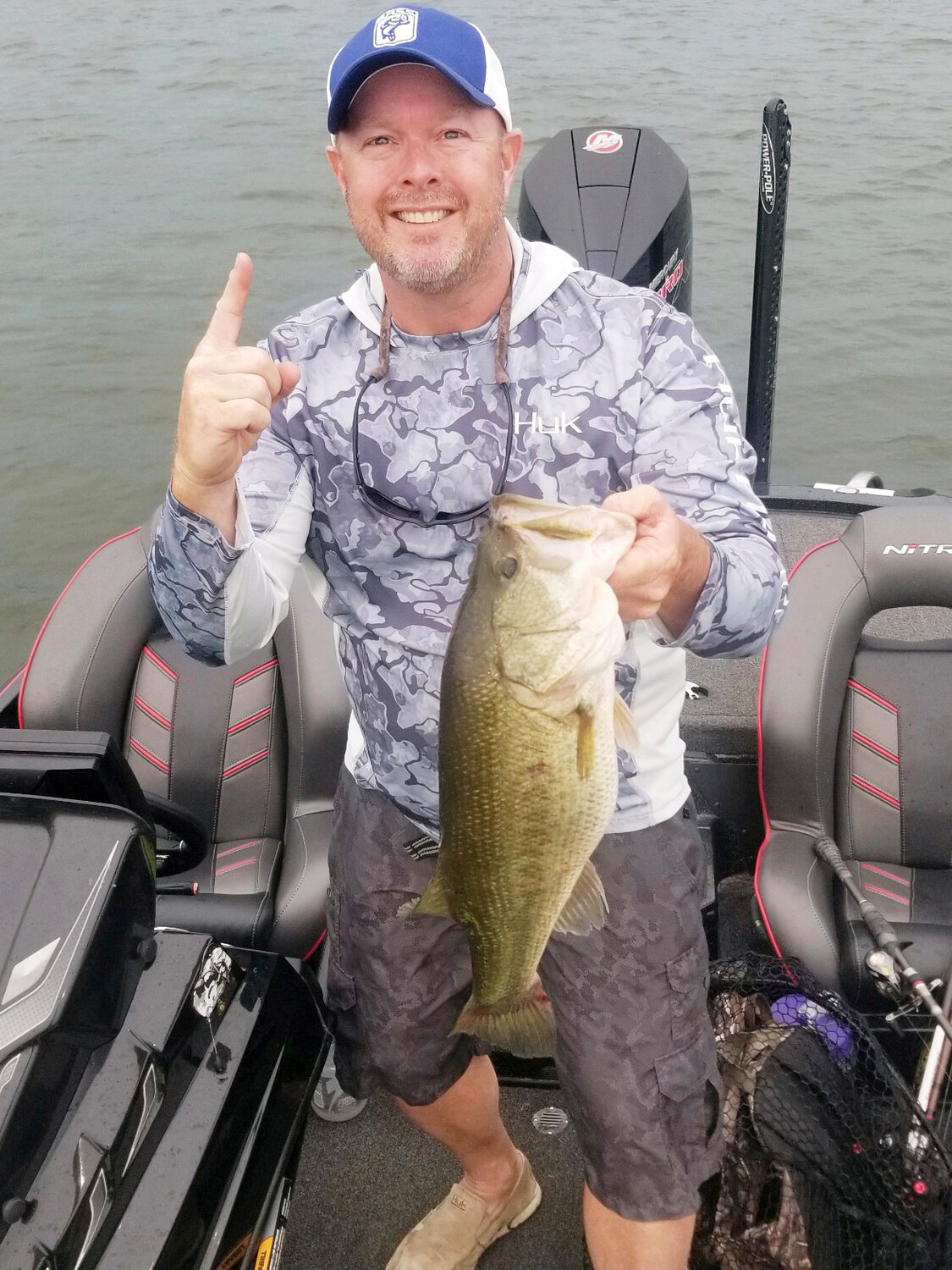Lake effects
Immense popularity gives Scott County's Lost Grove Lake some growing pains
Sunrise at Lost Grove Lake brings red winged blackbirds furious at the morning anglers.
The birds flit over restored grasslands as vehicles arrive before 5:30 a.m. at the four boat ramps around the 300-acre lake.
Kayaker Kevin Cline put in just after sun up.
“It’s an easy entry,” he said, sliding a 12-footer from his pickup. He drags it about 30 feet to a gentle, gravel slope and pushes off for another glorious day of fishing.
“Bass, blue gill, crappie. I heard someone caught a muskie out here,” he said.
Cline retired to Davenport from Missouri, land of big bass lakes. Now, in no more than 30 minutes from home, he can get out on the water, enjoy a couple hours, and wrap up well before noon.
Tom Seitz and Steve Finch each got two bass last visit, and expected the same this time. Finch retired from EMJ metals in Eldridge and feels like he’s on vacation when he drops a line into Lost Grove Lake. He’s out there at least twice a week.
Seitz, a retired Moline High School coach, has been a lifelong river fisherman.
“Bluegill, crappie. We’re looking for bass today,” he said, rippling a surface lure back to the bank. “I heard some people caught a muskie.”
Beginning in 2013, the Iowa Department of Natural Resources dropped 1,003 muskellunge into the lake, along with 203,937 walleye, channel cat and largemouth bass, according to DNR’s lake data. Muskies swim atop the Lost Grove Lake food chain. DNR fisheries biologist Chad Dolan expects better than 95 percent survive.
Since then, the DNR and a network of outdoors, hunting and fishing clubs have created a fishing and hunting escape for eastern Iowa, offering easy access to clear-water game fish, and grassland birds.
Now the new lake faces growing pains.
Invasive water plants choked coves and threatened a fish population that some experienced anglers say already needs help.
Visitors are filling boat ramp parking lots, and plans are underway to add a kayak and canoe ramp to meet a growing need.
“For the most part, it’s worked out exactly like we hoped,” Dolan said. “ We hoped to develop a premier fishery in east central Iowa and we did. A lot of the infrastructure we planned and designed worked out exactly as intended.”
That’s what draws retired coach Seitz to Lost Grove Lake once or twice a week.
“It’s easy to get to, and so beautiful. The water is so clear. This is not river fishing.
It’s more like Wisconsin fishing,” said the retired coach.
“I’ll take that as a compliment, and have to kind of agree with him,” DNR conservation officer Curt Kemmerer said. “That’s kind of how it was planned.”
Creating Lost Grove Lake
DNR launched formal planning in the mid 1980s. A Sept. 23, 1987 NSP story said: “The lake – one of five to be built across Iowa with funds from a federal excise tax on fishing equipment – will be the largest in Scott County. Cost of the project is estimated to be between $3-4.5 million, excluding the purchase of the land.”
More than 100 crowded Princeton city hall that month for a forum to address concerns, including property owners worried the state might sue to condemn land.
No condemnation was needed. Today, the county assessor records show DNR spending just over $2.4 million acquiring 45 parcels bought from Sept. 29, 1988 through Oct. 20, 2003.
Another $2.5 million was spent for design and site preparation. Construction costs included $4.34 million for the dam, and $1.17 million for shoreline and fish habitat construction.
A $920,000 contract built boat ramps, parking lots and pit toilets.
In all, that’s $11.3 million to create a lake that officially opened Oct. 7, 2015.
After land acquisition, the project steamrolled with community support, appreciated, and in some cases, cultivated by the DNR.
“It’s been a group effort; groups like Quad-City In Fisherman, QC Hawkeye Fly Fishers, Izaak Walton League, the list goes on and on,” Dolan said. “On clean up days, we have Scout groups stepping forward. It was a 30-year endeavor just to get the lake. Those contributions have continued nonstop.”
In Fishermen recently bought handrails for courtesy docks to make embarking safer and easier. Charles Mitchell earned his Eagle Scout badge by leading construction of lifejacket stands at the boat ramps. The stands offer life jackets boaters may borrow to keep safe and comply with Iowa law. Another Scout, Cole Stratman, plans to earn his Eagle badge by building another.
The Quad City Sailing School offered week-long classes in May and June, and plans another July 10-16.
The water clarity is no accident. DNR picked a site with a smaller watershed, and included erosion control and bank stabilization in the design. Submerged trees remain a Lost Grove Lake watermark. Those trees and habitat structures anchored on the bottom draw fish. The DNR posts maps pointing the way to the structures.
Tom Miano scouted the lake June 21 in advance of a weekend fishing tourney. He worked tree stands and shorelines early, trying to get a feel for where fish might be the next Sunday when the Fellowship of Christian Athletes expected to draw about 50 for a kayak bass fishing tournament.
The Rod Benders Bass Club tournament is Sept. 9 and 10.
Aaron Faulk, of McCausland, helps run a weekly Wednesday evening league for members nine weeks, culminating in a season-ending tournament Sept. 17.
“It’s a friendly tournament. Good competition, good time, then we go get Mexican food,” he said. “It’s amazing to have this lake just minutes from my house.”
Beyond the 400-acre lake is another mission.
“There is still another 1,300 acres of upland prairie, one of our larger public hunting areas in the region,” DNR officer Curt Kemmerer said. “It’s proven to be extremely valuable to our residents, and visitors. People flock to that area because it is high quality.”
Level grassland accessible on foot leads to natural and created habitat that holds birds and deer.
“The proof is there when hunters show up. Easy to see on the pheasant opener,” Kemmerer said. The lots fill up the last Saturday morning of October every year. It’s pretty obvious it’s a great place to hunt.”
The Tri State Retriever Club holds licensed hunt tests June 24 and 25.
“When I first came here, before the lake was built in 2010 and 11, I heard a lot of people say ‘we’ll never see this lake filled up,’ even as dozers and scrapers were turning dirt. Now, almost a decade and the awareness seems to keep growing. Every year I talk to new people who didn’t know it was there. I always appreciate hearing those comments. People are discovering wild places, pulling family members together, and away from phones, and enjoying the outdoors.”
Now DNR officers are looking at ways to accommodate the popularity.
“We’ve reached a pretty good point now where we have a lot of our infrastructure in place,” Dolan said. “We’re constantly looking at what we can do to improve the site.”
He’s looking at weekend parking.
“We felt we built a lot of parking lots and spaces. We’re seeing those spaces do indeed fill, especially on busy weekends. We’ve seen people parking on road shoulders. We’re kind of determining if a need is there for more.”
Considerations also include a single-lane boat ramp from gravel road access off 260th Street on the lake’s north side. Dolan is thinking a canoe and kayak ramp will free up weekend congestion on the paved boat ramps. “The idea is to spread out traffic, get a bit better balance. Something is proposed. Nothing is set in stone, but it definitely is an issue we’re hearing about.”
Another thing the DNR is hearing about is the fishing quality. Tournament organizer Aaron Faulk said he’s seen numbers and sizes of bass diminish the last few years. He blames overfishing of crappie and bluegill, and suggests stricter limits.
“It’s a great facility. I love the fact it’s minutes from my doorstep. I just wish it was bigger,” he said.
Weekends bring bigger crowds than he’s comfortable with. “But it’s crowded every day of the week, too. The place gets pummeled. The anglers per acre seems very high. It feels overharvested,” Faulk said. “Tournament totals are way down. Lots of guys are having a tough time catching keeper fish.”
He favors stricter size and count limits, especially on smaller fish.
“Right now, it’s a 25-a-day bag limit on crappie and bluegill. I’m thinking maybe 25 total,” he said. Overfishing smaller species depletes prey for prize bass.
Faulk said an algae bloom last summer, and the spread of an invasive Eurasian watermilfoil and curly leaf pondweed this year also hurt fishing.
The DNR treated Lost Grove Lake this month with a liquid herbicide that acts on the plants photosynthesis ability. Treatment waited until summer temperatures warmed the top of the water, creating a distinct division, or thermocline. Invasives do not grow in the colder water. So only the top of the lake needs treatment. “It reduces our cost by more than half,” Dolan said.
He said the chemical is safe for wildlife and applied at a rate of no more than one part per billion on a single application through the lake. He was rather surprised it took 10 years for the invasive to show up. They arrive on boats and in bait buckets.
“Lost Grove Lake has always been a concern from my perspective. It’s not too far from the Mississippi River. People can be in the river in the morning and Lost Grove in the afternoon,” he said.
The dense vegetation shelters small fry, and starves bigger fish. Dolan expects the treatment will lead to bigger muskie, walleye and bass.
The latest fishing report suggests an impact.
“With the weed beds dying back, the bluegills have moved out a little further from shore. Fish around the outer edges of the thicker submerged brush and you should be able to still find them.”
Bass fishing is fair. “With most of the curly leaf pondweed beds gone, look for the bass to have moved into the coontail beds or out a little deeper out to the thermocline in 10-16 feet of water.
Faulk sure hopes it works. “The bass size seemed to peak a couple of years ago.”
He and team partner Nate “Big Fish” Brown compete throughout the Midwest.
Faulk caught his biggest bass ever at Lost Grove Lake, a 7-pound, six-ouncer.
He and Brown are tops this year among the 21, two-man teams in the Lost Grove Fishing League. Faulk landed the year’s biggest, and won the June 14 tourney with a 5.1-pound, 20.5-inch bass.
Keywords
Lost Grove Lake, Kevin Cline, Tom Seitz, Steve Finch, Iowa Department of Natural Resources, Chad Dolan, Curt Kemmerer, Charles Mitchell, Cole Stratman, Tom Miano, Aaron Faulk, Nate BrownComments




































